2015 BMW R1200R First Ride Review + Video
Horizontal is our favorite opposition
Last but not least in BMW’s new line of liquid-cooled Boxers (and not even quite last since the RS variant will be here next year), is the lovely new thoroughly redesigned R1200R you see here. Where the GS and GS Adventure want you to dig out your Boy Scout neckerchief and head off into the boonies, and the RT wants you to abandon your life and make them all three-day weekends, the basic R is the bike for all reasons: This one’s designed to be great everyday urban transport but comfortable and capable enough for long distances with a passenger and luggage as well, and a reasonable dirt road wouldn’t be a problem either. It’s your basic Roadster, the most direct descendant of the first Boxer BMW built nigh-on 100 years ago.
Its mostly new tubular steel frame was left exposed in many areas to show off the purity of design BMW says this market segment wants. It’s definitely different, due to the fact that this is the first naked Boxer that slurps its fuel and air from the top of the cylinder head instead of from behind it, and having the intake tracts so prominently on display is a little incongruous at first. With no plastic to hide behind, it was also a difficult motorcycle in which to package all the things we’ve come to expect, and there’s plenty of them here.
You can start with dynamic Electronic Suspension Adjustment just like on the other water-Boxers. As usual, the base, non-ESA model was even hard to find at BMW’s press launch, but you’ll recognize it by its silver-colored fork tubes if you ever happen to spot one in the wild.
The ESA on the R works just like on the other Boxers: Using the handlebar buttons and the thumbwheel on the left grip lets you choose and fine-tune suspension settings. If you’re worried about the long-term reliability, maybe you shouldn’t be. According to BMW’s suspension engineer Martin Hartinger, who was along for the ride, the only things that could go wrong really are two electric needle-and-seat valves in the left fork tube, which handles all the front damping, and another one in the shock. Expensive cars have been using similar valves for years and they’re highly reliable.
The base bike also gets ABS, Automatic Stability Control, and two standard power delivery modes, Rain and Road (Rain gives the full 125-horsepower, but more gradually). From there, the buyer can opt for a “Pro” riding mode that also provides “Dynamic” and fully customizable “User” modes. That might be overkill on a roadster, really, but you want it anyway because with Pro comes the latest BMW Dynamic Traction Control (they’re very fond of the word “dynamic”), complete with a bank-angle sensor like all the cool bikes have now, including the S1000RR superbike. When you’re leaned all the way over on the edge of the tire, the computer’s going to step in to limit tire spin almost immediately. The more upright the bike becomes, the more it’s allowed to spin the tire and the more heroic you feel (and the more intact you’ll remain, hopefully).
Bring on the Rain
It seems like every time I go to Spain to ride motorcycles because it’s always sunny and dry there, it rains. This rain was mostly intermittent mist, just enough to keep the roads wet, and was at least a perfect opportunity to play with the electronics.
BMW rates this 1170cc Boxer at 125 horsepower (same as the R1200RT that put out 110 hp at the rear wheel and 80 ft-lbs of torque in last month’s’ Sport-Touring Final Smackdown). If that’s not quite KTM Super Duke R territory (156 rear-wheel hp / 96.5 lb-ft), it feels closer than the numbers indicate, partly because the BMW’s torque peak is so low in the powerband, at around 5400 rpm on our RT – the torque really is the thing with the Boxer. Max horsepower arrives at 7750 rpm in this bike, according to BMW, who also say the R’s new airbox and exhaust let it produce a shade more low-rev power than the RT and GS. Bereft of sound system and baggage and fairing, it also weighs 509 pounds to the RT’s 604 (our scales had the RT at 617), the GS’s 525, and the Super Duke’s 469 pounds.
Specs-wise, then, the R’s not quite our MOBOTY KTM Super Duke R, but it’s close enough on a damp, twisting Spanish backroad and nearly everywhere else, too, especially since it has the same sort of confidence-boosting upright ergonomics and aluminum handlebar. At first, you tiptoe in to the corner carefully, and give a tentative exit twist of the throttle in Rain mode. By the first coffee stop, you’re still tiptoeing in, but giving the digital throttle cable big healthy tugs in Dynamic at the exits, to which the Boxer responds with really serious acceleration and an inspiring boomy exhaust note that’s now more barky than flatulent; now it sounds almost as nice as a 90-degree Twin, and a pack of Rs running together sounds like the Luftwaffe’s back in town.
With such good traction control, you sort of wonder why they bother with a Rain mode, though it does tame the throttle response noticeably. Spanish backroads are amazingly grippy and smooth even when wet, the bike’s Metzeler Z8s are likewise impressive, and you have to twist the throttle surprisingly hard to see the TC lights on the dashboard flicker. When it happens, it’s really smooth and unobtrusive. And when you look up it’s time to try the ABS, because all that torque has you at the next corner really quick. The Shift Assist – actually, this bike gets the Shift Assistant Pro – is really nice in the rain, too. When you’ve already got enough to think about modulating the brakes and wondering what’s better – Armco or thousand-foot cliff? – all you need to do is toe the shifter down (with the throttle closed) for a perfect smooth double-clutch auto-blip downshift. It’s part of the Pro ride mode option, also.
Another big difference is the use of a 45mm inverted fork instead of the usual Telelever front end. BMW says it’s for packaging and aesthetic reasons, but also “for optimum riding precision, as well as clear feedback from the front wheel.” Some riders have always complained the Telelever feels a bit numb at full lean, which never was much of an issue for most of us riding it on the street. Putting on a fork similar to the one it uses on the S1000RR (and unlike the one on the R Nine T) sends a message that the new 1200R is also meant to be a very capable sportbike.
In Rain, Road or Dynamic, the bike always felt well balanced with my 160 pounds on board. We did hit a few stretches of curves that were mostly dry, but never dry enough to really take up the cudgels. Though it’s got a lot of trail – 4.95 inches via 27.7-degrees rake – it seems like the R could be made to turn in really quickly. Ridden in the wet, though, it was nice and stable, and all the modern electronic aids swaddle you in a safety blanket you’re as thankful for as the warm, dry Dainese Gore-Tex-lined suit I got an excuse to wear. Naturally, the new bike comes with two-stage heated grips with their own dedicated control button … ahhh.
Comfort-wise, it’s sort of a sit-down-in bike with a high tank like the Super Duke R; the tank’s a good shape for gripping with your thighs, and also acts like a torso fairing. For me, the grips and footpegs are in excellent places, with different seats available from 760 to 840mm (29.9 to 33 inches). Of course, hard bags and a top case are options. How about I just list all the optional BMW parts at the end, since there is a shedload?
Why build a Boxer Roadster anyway, given that BMW already has the lighter, faster four-cylinder S1000R in its lineup, which lost by a red nostril hair to the Super Duke R in our Super Naked comparisons last year? Tradition, that’s why. It’s BMW’s signature architecture, and as such, Boxer-engined bikes still make up more than 50% of BMW sales. BMW’s original “Flying Brick” Four that was supposed to replace the Boxer 30 years ago is cold in the grave. The current inline-Four is a great engine, the 1600 Six is a scalp-tingling engineering marvel, but when it comes to establishing emotional attachment to a motorcycle, there seems to be no substitute, for many people, for a thing with two really big pistons you can trace to nearly the beginning of motorcycling. (Maybe there’s a mammalian connection? Why do we call them “jugs”?)
It’s completely modernized and better than ever, but the new R is still a great old highly civilized beast roaring free through a numbed-out world where people riding an Airbus 380 to Europe would rather shut the windows and watch awful movies full of choreographed car crashes and machine guns with bottomless magazines than see the world pass beneath them. Oh well. More dynamic fun for the rest of us.
+ Highs
- Outstanding ergos and seat
- Standard cruise control!
- Optional Keyless Ride system lets you startthe bike, put in gas, and lock the fork without taking the key from your pocket
– Sighs
- A little TMI in the instrumentation department
- Big motor looks even bigger with downdraft intakes
- Someday I’d like to try a non-ESA
BMW R1200R Specifications Specs | |||
| Engine | Air/liquid-cooled twin-cylinder Boxer engine | ||
| Displacement | 1170cc | ||
| Bore/stroke | 101 x 73mm | ||
| Compression ratio | 12.5:1, premium unleaded (95 RON) | ||
| Valve actuation | DOHC 4v/cylinder; 40mm intake valves, 34mm exhausts | ||
| Fuel delivery | BMS-X fuel injection; two 52mm throttle bodies | ||
| Emission control | Closed-loop 3-way catalytic converter | ||
| Alternator output | 508 watts | ||
| Gearbox | Constant-mesh 6-speed, back-torque limiting wet clutch | ||
| Transmission ratios | I 2.438 II 1.714 III 1.296 IV 1.059 V 0.943 VI 0.848 | ||
| Final drive | Shaft, 2.818 | ||
| Frame | Tubular steel bridge frame, engine self-supporting | ||
| Front suspension | 45mm inverted telescopic fork; 140mm (5.5 in.) travel | ||
| Rear suspension | BMW EVO Paralever; 140mm (5.5 in.) travel | ||
| Rake/trail | 27.7 degrees/ 125.6mm (4.95 in.) | ||
| Wheelbase | 1515mm (59.65 in.) | ||
| Front brake | Dual 320mm discs, 4-piston calipers, ABS | ||
| Rear brake | 276mm disc, 2-piston caliper, ABS | ||
| Wheels | 3.50 x 17 in., 5.50 x 17 in. | ||
| Tires | 120/70 ZR17, 180/55 ZR17 | ||
| Seat height | 760, 820 or 840mm (29.9 to 33 in.) | ||
| DIN unladen weight, road ready | 231 kg (509 lb) | ||
| Permitted total weight | 450 kg (992 lb) | ||
| Fuel tank capacity | 18L (4.76 gal) | ||
| Optional Stuff | All optional equipment included in the packages can also be ordered individually, with the exception of the onboard computer Pro.Comfort Package comprising: chrome-plated exhaust system, heated grips, tire pressure monitorTouring Package comprising: Dynamic ESA, preparation for navigation system, onboard computer Pro, pannier holder, centre stand, luggage grid with hand grips, cruise controlDynamic Package comprising: riding mode Pro (including DTC), Sport windshield, LED indicators, daytime running lightKeyless rideGear shift assistant ProAnti-theft alarm systemHigh rider’s seat (820mm)Low rider’s seat (760mm)Sport rider’s seat (840mm)Comfort pillion seat HP Parts HP milled clutch leverHP milled brake leverHP milled rider footrest systemStowage range Small tank rucksackPannierTopcase 2, lacquer-varnish lidLuggage grid with hand gripsPannier inner bagTopcase inner bagLED indicatorsEngine spoilerAkrapović Sport silencerComfort pillion seatBackrest for topcaseHigh windshieldSport windshieldTinted Sport windshieldHeated gripsBMW Motorrad Navigator VCradle for BMW Motorrad Navigator VSafety Retrofit anti-theft alarm systemLED auxiliary headlightEngine protection barRetrofit Riding mode ProBMW Motorrad warning triangleLarge first aid kitSmall first aid kitBMW Motorrad battery charger 230VBMW Motorrad battery charger 110VBMW Motorrad battery charger for UKRepair kit for tubeless tyresCentre stand | ||
More by John Burns





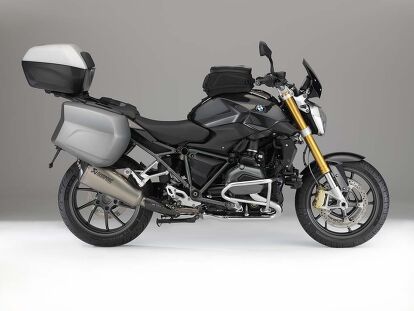














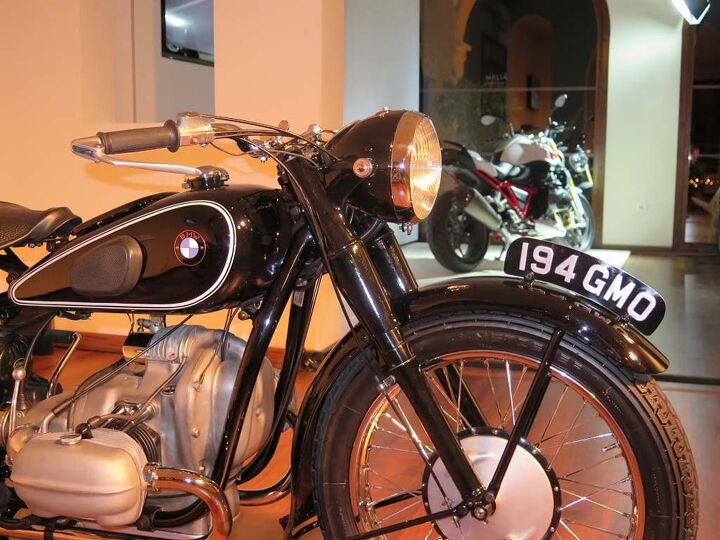
















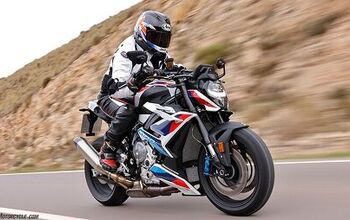
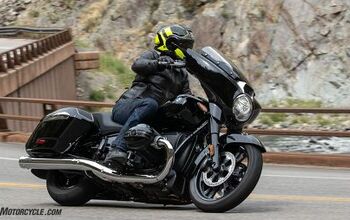
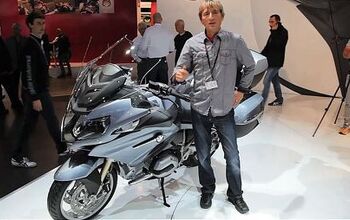












Comments
Join the conversation
Great video and a pleasant write - up. But why do I get the feeling that having experienced BMW's sumptuous hospitality - you are slightly reticent to criticise any aspect of the design.
What I'd really like to know is ; What are its strengths and weaknesses? How does it suit someone moving up from say an 800. What is your view of its "value for money?"
Also , I've found with previous BMW purchases the standard seat is only good for 80 or 90 miles at most and you have to pay £400 for the "comfort seat". How does this bike fare in that respect?
A report slightly bereft of opinion.
The R1200R LC is by far my favorite street motorcycle out of the 25+ I have owned. The technology suite works extremely well and is almost seamless. It handles long distance touring quite well (with the accessory windscreen) and will keep up with sport bikes on twisty backroads. If it had better passenger accommodations it would be my only motorcycle. I decided on the R over the RT due to better handling and lower weight, but both are fantastic motorcycles.